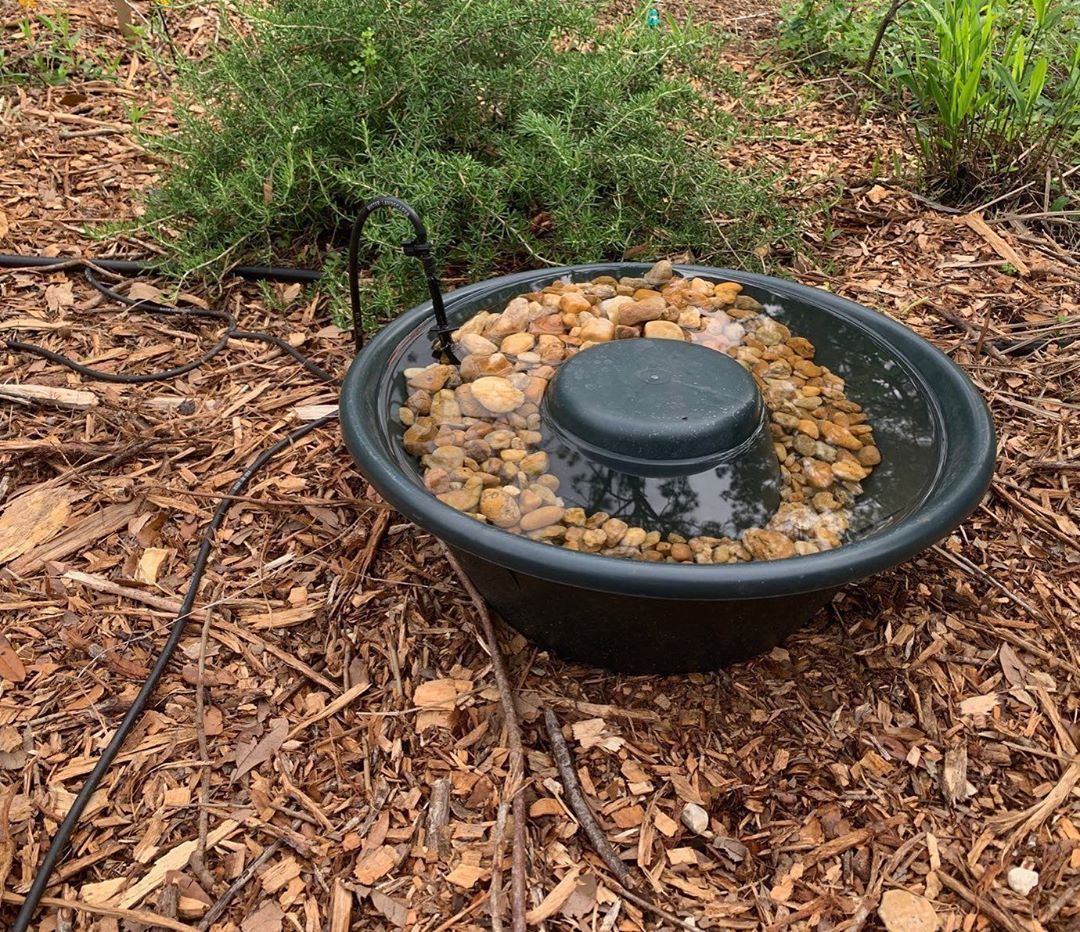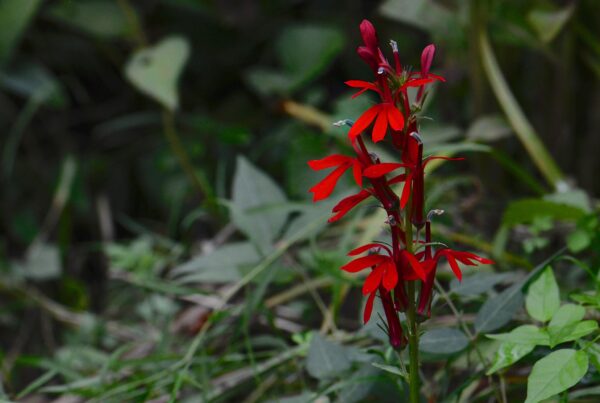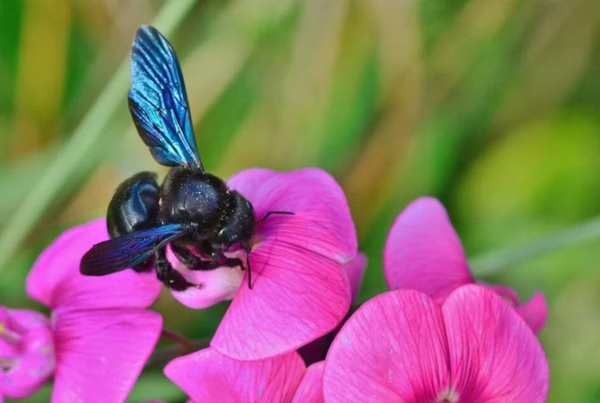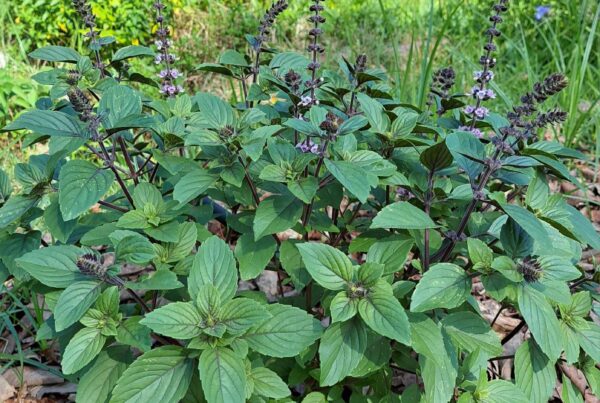Water is an essential part of healthy wildlife habitats, including our gardens, yards and neighborhoods. When creating a backyard habitat it’s important to provide water along with food and cover. Many of us, while at home, have spent more time watching birds, planting native plants for food, maybe putting up bird feeders to provide an extra snack. Providing a birdbath brings even more birdwatching opportunities.
Birds need clean water for drinking and bathing; this is especially important in times of decreased rainfall. There are many options for birdbaths to add to your garden. Most of us have seen the concrete, stone or even metal baths available at home stores, hardware stores and nurseries. They come in a variety of styles and prices, and generally are sturdy and easy to clean.
Pictured below is a simple “do it yourself” birdbath made by turning over a Christmas tree stand, adding rocks and a bubbler. Moving water helps attract birds so adding a bubbler, mister or dripper can help draw in the birds. You can even make your own dripper at home.
If you have a large space you might want to install a large pond, like this one shown in early stages of planting.


A birdbath should have just 2-3 inches of water at the deepest part, a rough or textured bottom and slightly sloping sides for easy entry. You can also add stones for perching. Keeping your birdbath clean is essential and ease of cleaning can be a factor when deciding what type of bath to buy or make. Bleach or other chemicals aren’t necessary, just scrub the bath out at least once a week. Changing the water every few days will keep the water clean and free of mosquito larvae. Place the birdbath near to shrubs and trees, but not so close that predators (think neighborhood cats) can sneak up on birds.
You can find more information on providing birdbaths and even creating larger water features on the University of Florida IFAS Gardening Solutions sites.
Photos by Camille Coffman, Rachel Mathes – UF/IFAS Leon County Extension






